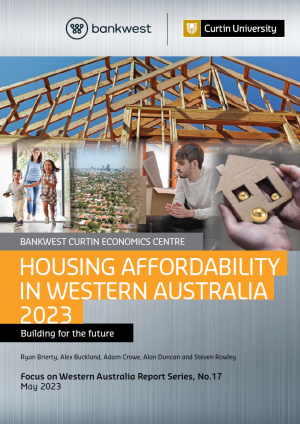Housing Affordability in Western Australia 2023: Building for the future
The latest report in the BCEC Focus on WA report series, Housing Affordability in Western Australia 2023: Building for the future, compares housing affordability in WA to other jurisdictions for both homeowners and renters to get a sense of where WA sits.
This research looks at overall affordability and where the key pressures are that people face from rising interest rates, construction project delays and escalating rental costs.
Key findings and recommendations:
- Interest rate rises, dwelling price and rent increases have made housing less affordable in Western Australia. Strong, COVID-19 driven demand has pushed up prices and rents in regional WA while the availability of dwellings for sale across the state remains low.
- House rents in Perth have risen by 13 per cent over the last year (CoreLogic 2023), the largest rise of any capital city, while unit rents have increased by 13.6 per cent. These increases are placing significant financial pressure on renters.
- The COVID-19 stimulus grants increased building approvals and dwelling commencements sharply in WA but these housing starts have yet to feed through into completions and deliver new stock to the market. At the end of 2022 there were 27,000 dwellings under construction compared to around 12,000 at the end of 2019.
- New supply is likely to be well below the long-term average over the next two to three years because high construction costs mean much new development is not financially feasible for the industry and the time it takes to deliver new supply once development once again becomes profitable.
- Reforms to Commonwealth Rent Assistance are essential and State Government should consider financial support for low-income renters mirroring the support introduced during COVID-19 which saved many renters from homelessness.
- A recent State Government funding commitment to the provision of new social housing is welcome but required is the provision of around 900 social housing dwellings per annum just to maintain social housing at its current level as a proportion of total stock (3.8 per cent).
- The State Government should deliver greater investment in homelessness support services and an expansion of funding to support Housing First initiatives.





